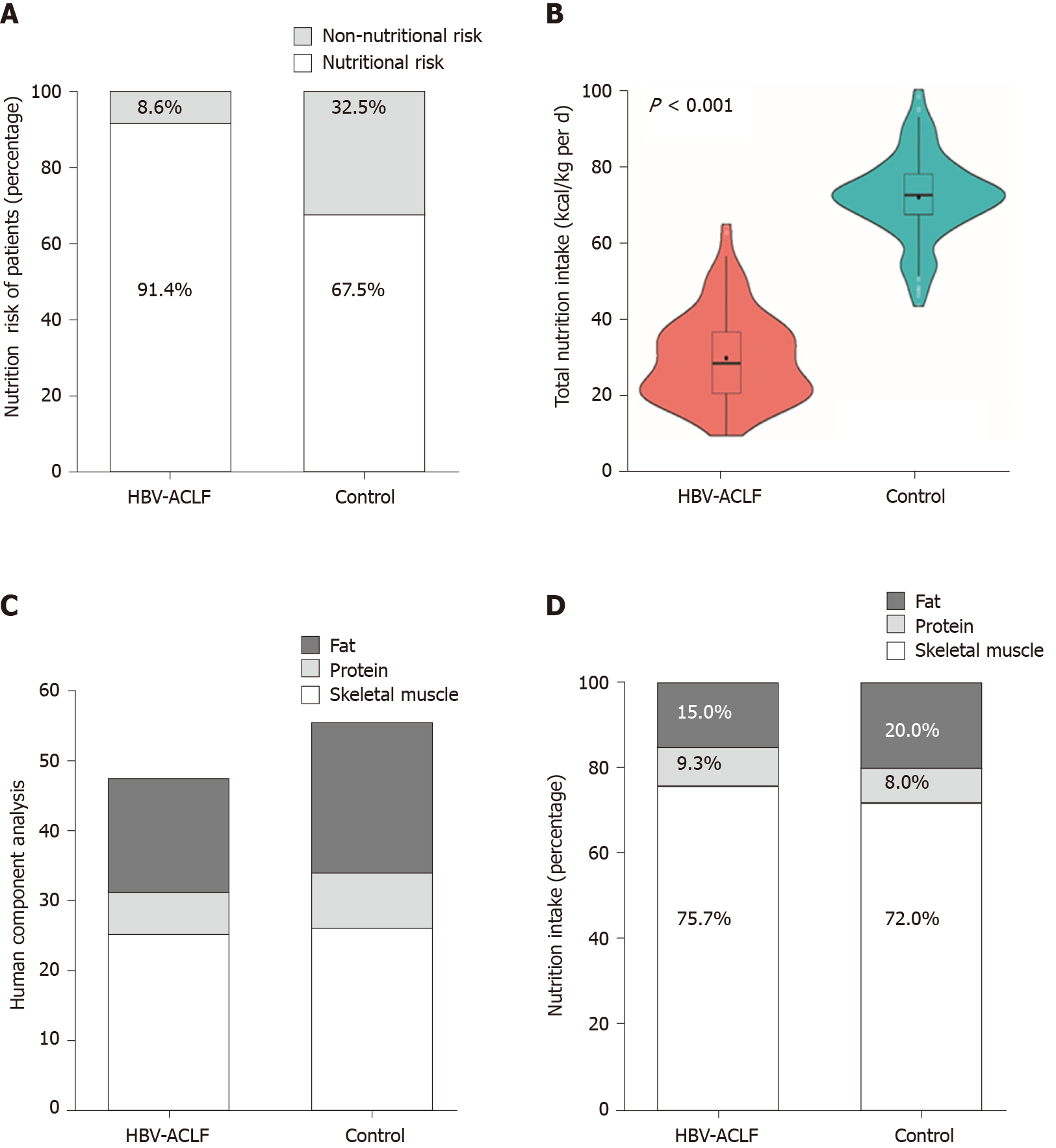Copyright
©The Author(s) 2020.
World J Gastroenterol. Aug 7, 2020; 26(29): 4288-4301
Published online Aug 7, 2020. doi: 10.3748/wjg.v26.i29.4288
Published online Aug 7, 2020. doi: 10.3748/wjg.v26.i29.4288
Figure 2 Comparison of nutritional status between the hepatitis B virus-associated acute-on-chronic liver failure group and the control group.
A: According to the Nutritional risk screening 2002 assessment, 91.4% of hepatitis B virus-associated acute-on-chronic liver failure (HBV-ACLF) patients and 67.5% of compensated cirrhosis patients had a nutritional risk; B: The energy intake in HBV-ACLF patients was lower than that in compensated cirrhosis patients (P < 0.001); C: The body composition analysis in HBV-ACLF and control group. Significant decreases in skeletal muscle and fat in HBV-ACLF patients were observed; D: The intake of calories, protein, and fat in HBV-ACLF were lower than those in the control group at hospital admission (P < 0.001). HBV-ACLF: Hepatitis B virus-associated acute-on-chronic liver failure.
- Citation: Chang Y, Liu QY, Zhang Q, Rong YM, Lu CZ, Li H. Role of nutritional status and nutritional support in outcome of hepatitis B virus-associated acute-on-chronic liver failure. World J Gastroenterol 2020; 26(29): 4288-4301
- URL: https://www.wjgnet.com/1007-9327/full/v26/i29/4288.htm
- DOI: https://dx.doi.org/10.3748/wjg.v26.i29.4288









